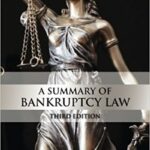
It’s the pits to be stood up by a Rule.
Rule 3002.1 is, in my opinion, the best thing that’s happened in bankruptcy in years. I’m a goggle-eyed fan.
Whether you chalk mortgage servicing problems up to ineptitude or venality, it is indisputable that a mortgage servicer can’t audit a loan file and come up with the same number twice.
Mortgage problems are the very reason that many Bay Area families end up in Chapter 13. So a chance for a snapshot of the loan at case end is salutary.
We have a rule that requires a mortgage servicer’s response, some teeth if they don’t comply, and a judge to make it all right.
And , of course, I relish the chance to vindicate clients and expose servicers for what they are. (you supply the adjectives).
So, I recently substituted into a couple of Chapter 13 cases with mortgage issues, anticipating a tussle when the trustee’s Notice of Final Cure Payment went out. The clients were candid that there had been interruptions in payments post petition and the docket was devoid of notices of fees and expenses.
All the signs said Trouble Ahead.
I assembled reported cases. developed strategies in my head, pondered how to get paid for the work sorting out the mortgage loan at case end.
Well, lo and behold. In the two nastiest cases at hand, the lenders came back and filed a response declaring the loan post petition current!
I’m delighted and the client is over the moon.
In both cases, the response is signed by an attorney, reciting as follows:
I declare under penalty of perjury that the information provided in this response is true and correct
to the best of my knowledge, information, and reasonable belief.
So the servicer is on the record that all is well with the loan. And I’m all dressed up and find no courtroom fight needed.
The betting in my office concerns how long it will be before the servicer figures out that all post petition payments weren’t made, and all the junk fees added to the loan haven’t been paid.
Wanna bet?
UPDATE: See what happened three weeks later.







